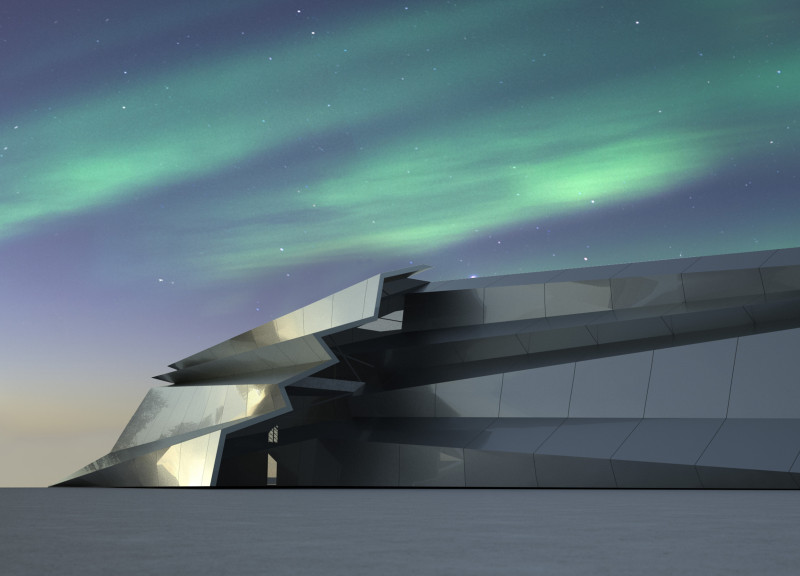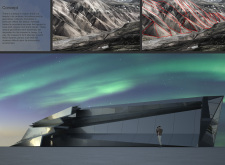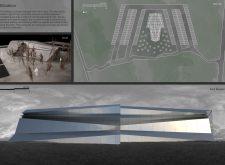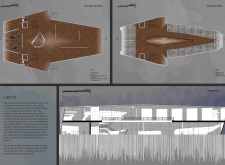5 key facts about this project
The central concept of the museum revolves around the reflection of Iceland’s rugged terrain. The museum's design employs angular forms and dynamic geometry that mimic the mountains' profiles, creating a visual connection to the landscape. The project features a multi-level layout, with a ground floor designated for public engagement and an upper level housing administrative functions and exhibition spaces.
Spatial Arrangement and Functional Design
The ground floor serves as the main entry point where visitors are welcomed into a reception area that acts as a hub for information. Adjacent flexible exhibition spaces allow for varied display configurations, supporting changing exhibitions and events. A café located within proximity to these spaces enhances the social interaction among visitors.
The first floor of the museum includes offices and meeting rooms, designed to maximize natural light through extensive glazing. Large windows provide views of the surroundings, promoting a connection between the interior space and the external environment. This thoughtful arrangement supports both the museum's operational needs and the visitor experience.
Distinctive Design Approaches
What distinguishes the Iceland Museum project from other cultural institutions is its integration of local environmental elements. The use of materials like corrugated and stainless steel not only adds durability but also resonates with Icelandic building traditions. The angled structure is not merely aesthetic; it is a deliberate design choice that addresses site conditions and visitor flow.
The museum's layout is carefully planned to consider vehicular access to minimize congestion while enhancing visitor arrivals. Landscaped areas around the museum include tree planting that supports local ecosystems and enriches the immersive experience upon arrival.
Additionally, the structure incorporates design elements to capture natural phenomena, such as providing optimal viewpoints for observing the northern lights. This integration reinforces the relationship between architecture and nature, aligning with Iceland's cultural narratives.
The Iceland Museum project stands as a significant architectural endeavor that encapsulates local identity through its innovative use of materials, functional design, and site-responsive strategies. To explore the architectural plans, sections, and designs in detail, engaging with the project presentation is encouraged for deeper insights into its unique ideas and executions.


























